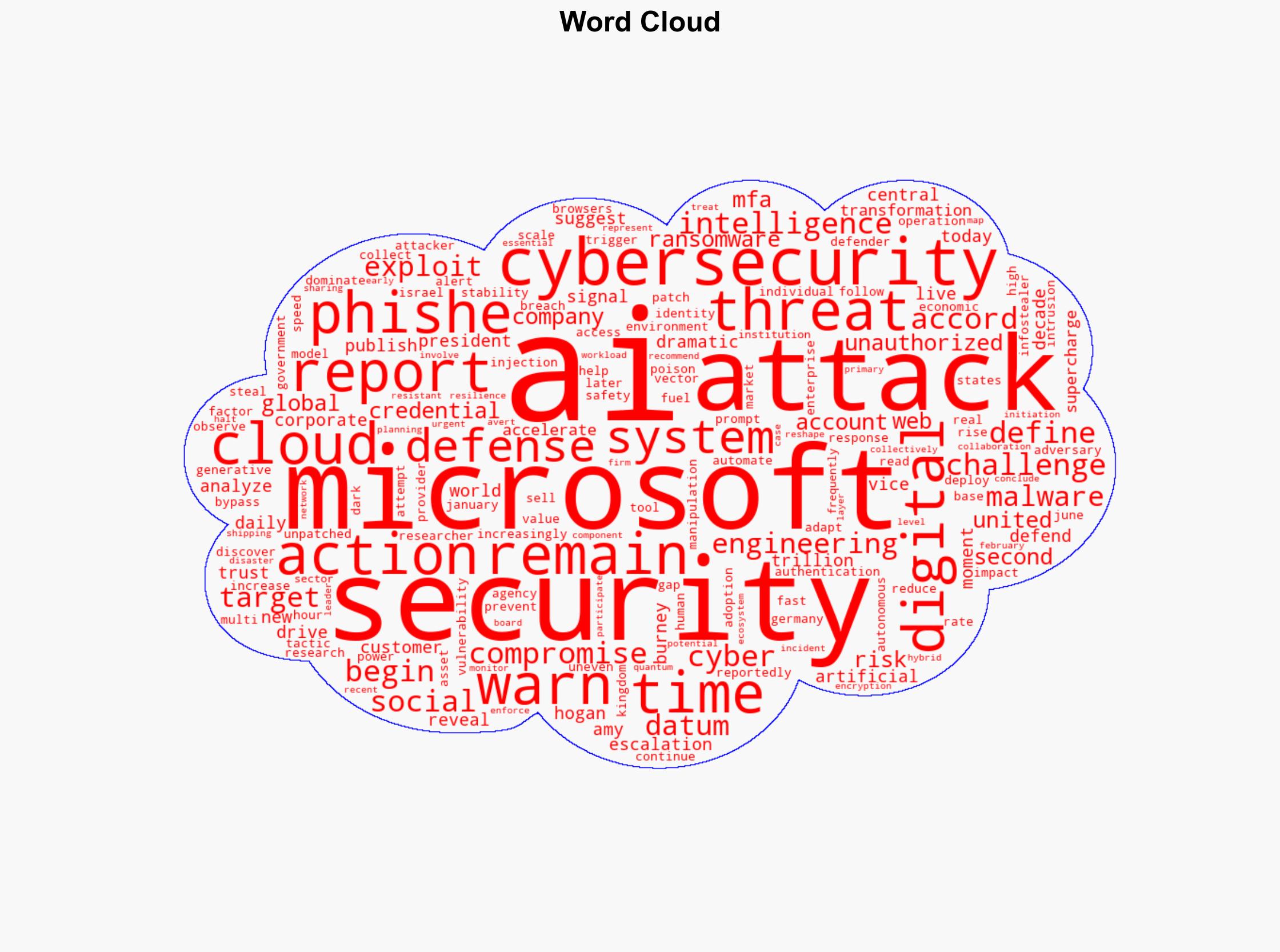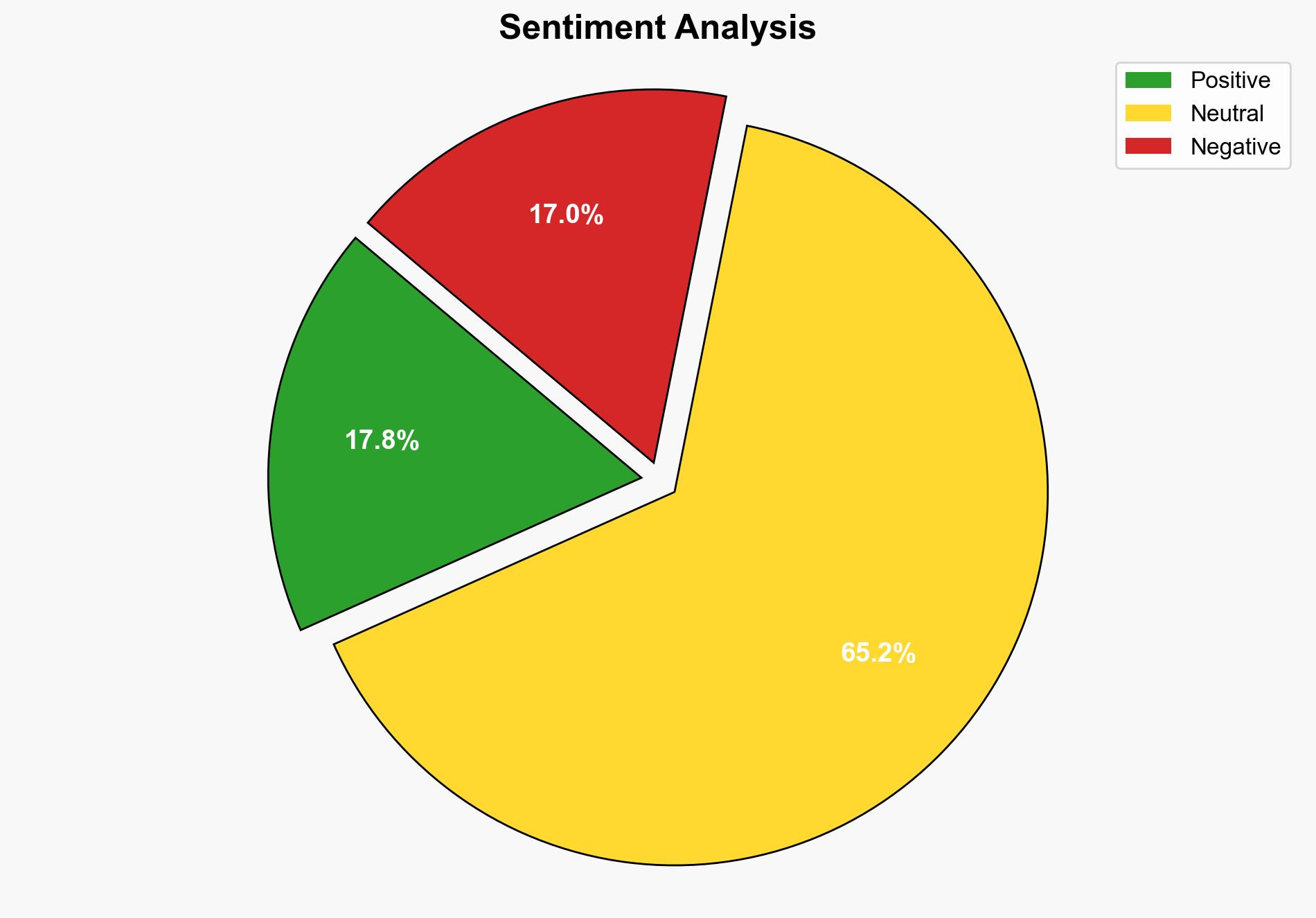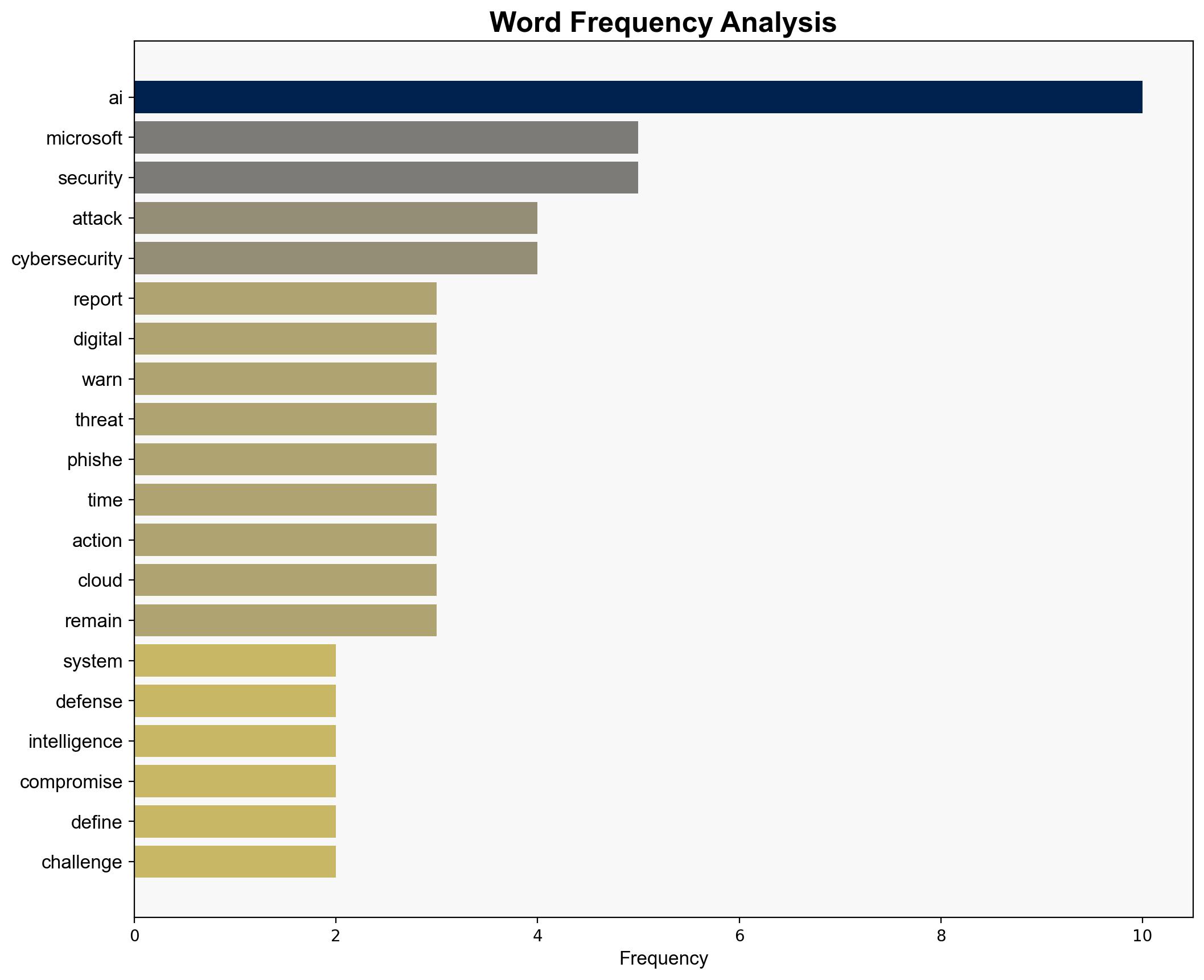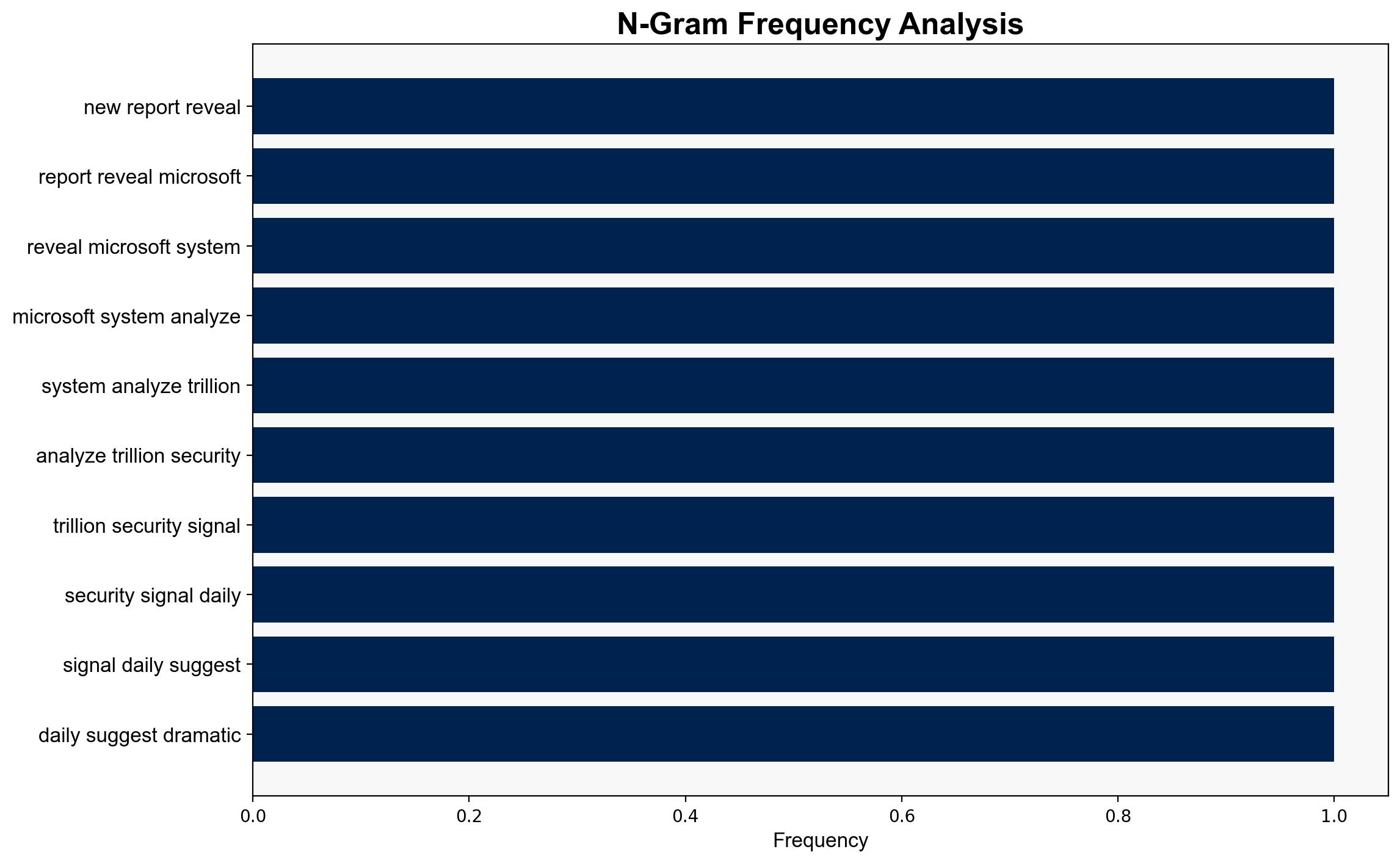AI Attacks Surge as Microsoft Process 100 Trillion Signals Daily – Infosecurity Magazine
Published on: 2025-10-16
Intelligence Report: AI Attacks Surge as Microsoft Process 100 Trillion Signals Daily – Infosecurity Magazine
1. BLUF (Bottom Line Up Front)
The strategic judgment indicates a high likelihood that AI-driven cyber threats are escalating, posing significant risks to economic stability and individual safety. The most supported hypothesis is that adversaries are leveraging AI to automate and scale cyber attacks, outpacing current defensive measures. Confidence level: High. Recommended action includes enhancing AI-based defensive capabilities and increasing adoption of multi-factor authentication (MFA).
2. Competing Hypotheses
1. **Hypothesis A**: Adversaries are increasingly using AI to automate and scale cyber attacks, leading to a significant rise in the volume and sophistication of threats.
2. **Hypothesis B**: The perceived increase in AI-driven cyber attacks is primarily due to improved detection capabilities and heightened awareness, rather than an actual surge in attacks.
Using the Analysis of Competing Hypotheses (ACH) 2.0, Hypothesis A is better supported. The report highlights AI’s role in automating phishing, social engineering, and vulnerability discovery, which aligns with observed trends in cyber threat evolution. Hypothesis B lacks sufficient evidence, as the report does not indicate a significant change in detection technology that would solely account for the perceived increase.
3. Key Assumptions and Red Flags
– **Assumptions**: It is assumed that AI capabilities are accessible to adversaries and that these capabilities are being effectively integrated into cyber attack strategies.
– **Red Flags**: The report does not provide specific data on the increase in attack volume, which could indicate an overestimation of the threat level.
– **Blind Spots**: Potential over-reliance on Microsoft’s perspective without corroborating data from other cybersecurity entities.
4. Implications and Strategic Risks
The integration of AI in cyber attacks could lead to more frequent and sophisticated breaches, affecting critical infrastructure and economic systems. The rapid pace of AI development may outstrip current regulatory and defensive measures, increasing vulnerability. Geopolitically, nations with advanced AI capabilities may gain a strategic advantage, potentially leading to an arms race in cyber warfare.
5. Recommendations and Outlook
- Enhance AI-driven defensive measures to match the sophistication of AI-based attacks.
- Increase adoption of MFA and other security protocols to mitigate unauthorized access risks.
- Encourage international collaboration and intelligence sharing to address AI-related cyber threats.
- Scenario Projections:
- Best Case: Rapid adaptation of AI defenses reduces attack success rates.
- Worst Case: AI-driven attacks overwhelm current defenses, leading to widespread breaches.
- Most Likely: Incremental improvements in defense keep pace with evolving threats, but require continuous adaptation.
6. Key Individuals and Entities
– Amy Hogan-Burney
– Microsoft
7. Thematic Tags
national security threats, cybersecurity, counter-terrorism, regional focus





